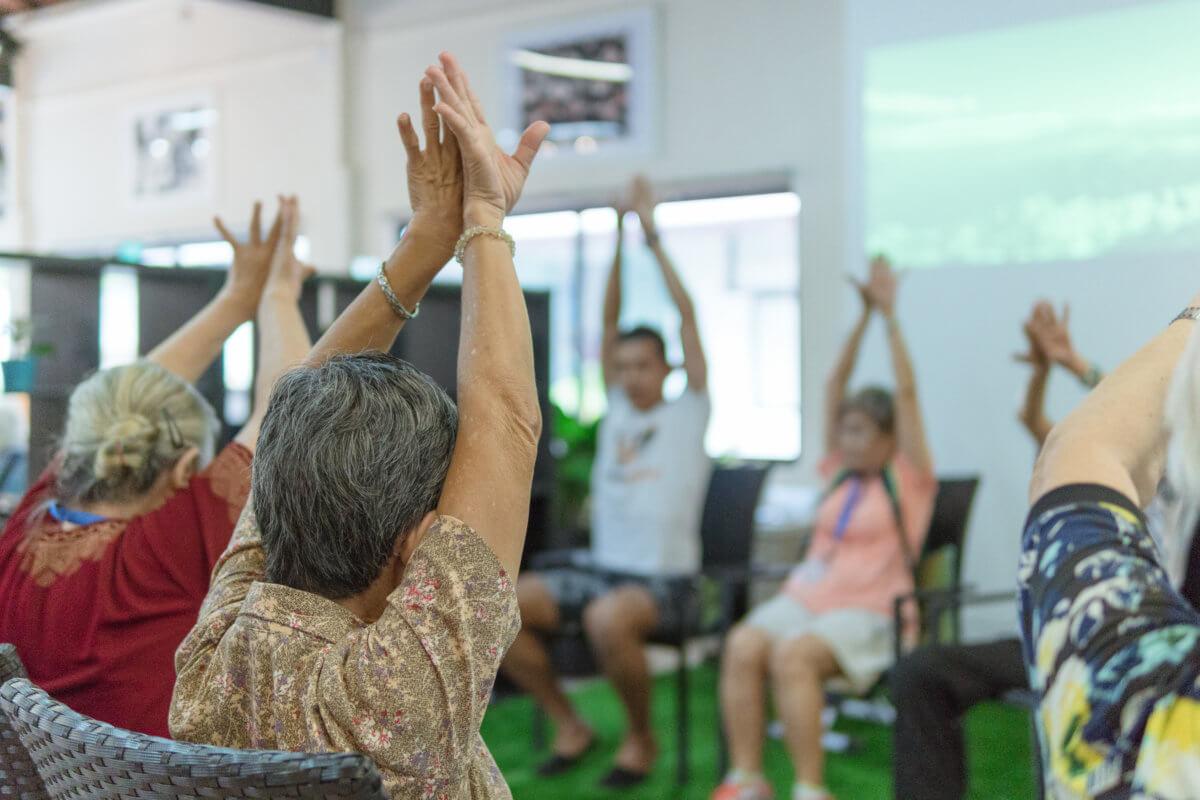Physical Therapy important to a person with dementia?
According to the Finnish Geriatric Intervention Study to Prevent Cognitive Impairment and Disability (FINGER*), it is possible to prevent cognitive decline using a multidomain intervention among older at-risk individuals. The study lists a number of interventions including diet, exercise, cognitive and social. In particular, the exercise intervention refers to individually tailored, progressive muscle strength training and aerobic exercise programs, including exercises to maintain and improve postural balance. Hence, the study shows that physical therapy is an important aspect of multi-prone therapy for a person with cognitive impairment.
Interview with our clients
Hovi Care conducts physical therapy for our clients as part of our holistic care approach. Recently, we caught up with our clients on the importance and benefits of such therapy. Below is an excerpt of the interview with them.
What exercises do you carry out during physical therapy?
We normally carry out stretching, balancing and co-ordination exercises. We also work out on the Gamba gym machines to tone up our leg, arm and chest muscles. The whole exercise is about an hour and the timing is just right. Of course, we will take breaks in between exercises and drink some water to rejuvenate ourselves. The care givers also take our blood pressures to ensure we do not over-exert ourselves.
So, what are the benefits of such exercises?
The stretching exercise helps to make our muscles less tight. This agility will help us stretch out to tie our shoes or scratch our back with ease. The balancing exercise helps us walk straight so that we do not sway sideways and fall down. The co-ordination exercise improves our brain and physical co-ordination. In fact, it improves our overall ability to react to emergency needs if required. Such co-ordination exercise is not an exercise you will normally carry out. So, we are glad to be trained on such special exercise. The work out can be strenuous but nonetheless good for the heart. In fact, it improves blood circulation and enhances immune system. During these exercises, the heart pumps oxygen and nutrients around the body and brain to fuel the cells which iscrucial to fight against bacteria and viruses.
Now, what can you conclude about physical therapy?
Now we find new meaning in performing such physical activities. We once thought of such physical exertion was a waste of time and mundane nuisance. After learning the benefits of exercising, we are motivated and encouraged to even exercise more. In addition, the physical instructor also puts us through a benchmark physical test. According to the initial benchmark, we are in the lower percentiles in most activities in our cohort. This sets off alarm bells in our heads – pride aside. We are now even more spurred up to perform better to improve our scores.
Written by Tommy Tan
Managing Director
HoviClub Horsecity
*) Reference: http://alzheimersprevention.org/downloadables/FINGER-study-report-by-ARPF.pdf

